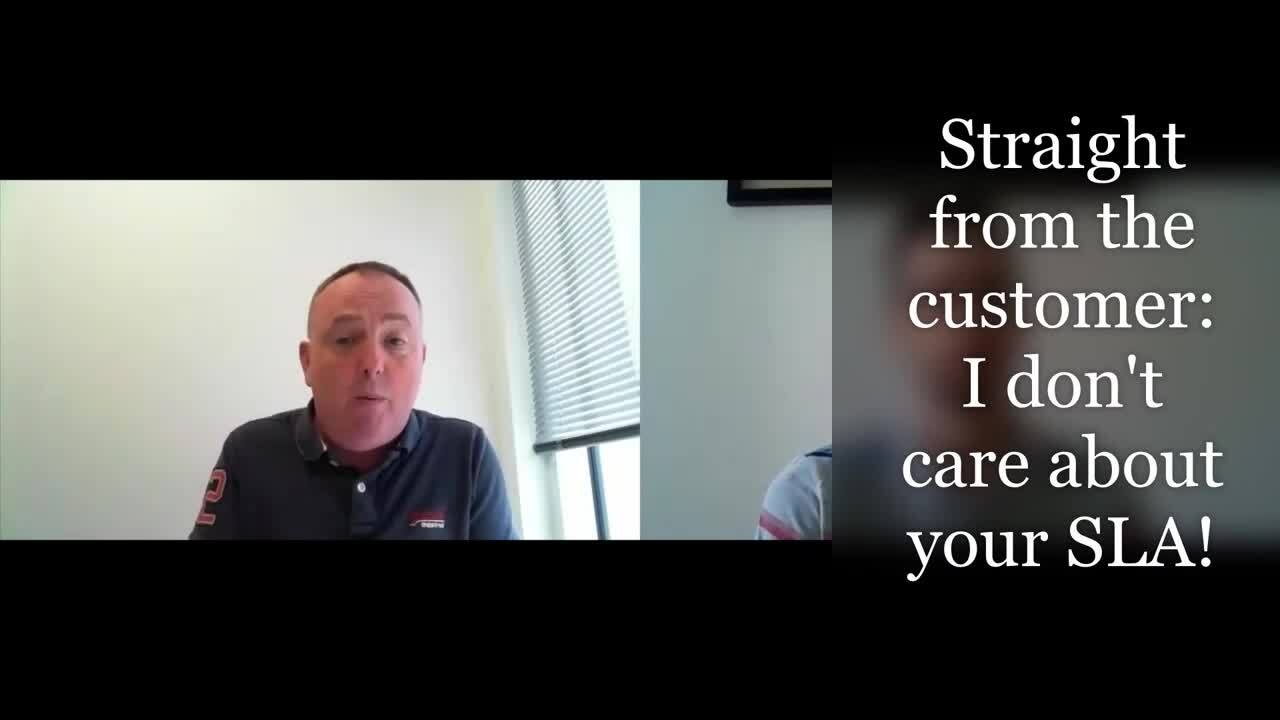Recently I got the chance to speak with Neil Keating, Co-Founder and Chief Experience Officer at Bright Horse, a full-service IT experience consulting and training company.
Neil’s candor and deep knowledge about IT Operations and digital experience was obvious from the start. Find a brief clip of our conversation here and several helpful nuggets for IT leaders in the text below!

Who is Bright Horse and what’s its mission?
We are a full-service consulting company with the mission of helping IT departments to implement XLA (experience level agreements) strategies that improve the overall work experience. In essence, we help IT deliver the right employee outcomes—not just shortsighted outputs, something I’ll explain more in a moment.
We have a suite of educational services, experience assessments, in-house consulting & advisory experts, and we provide Nexthink technology to carry out that work.
I suppose the implication then is that SLAs (service level agreements) are not enough? But is it a zero-sum game in your opinion? Should IT departments abandon SLAs all together?
We don’t suggest that IT teams toss out SLAs all together—they have a purpose. They provide an easily quantifiable metric that tells you what you did (and didn’t do), and that is helpful, but they were never designed to measure user experience.
Many organizations will have 99% uptime on their servers… great, employees don’t care. They care about outages. IT’s focus, instead, should be on whether its services are truly improving employee productivity.
Years ago, working for a service provider I learned a lesson that stuck with me.
We hit every SLA that quarter and I assumed the customer would be ecstatic. Wrong. In our meeting, that customer told me “I don’t really care about all that. I can see you’re picking up the phone. I can see you’re responding to tickets in an hour. I can see you’re keeping the servers up, but I still have the same amount of calls in the first place, the same amount of incidents in the first place! You’re doing what’s right for the contract (SLA) but not what’s right for the business!”.
Ultimately, I think you need to combine XLAs and SLAs because together they can provide both quantitative and qualitative data that shapes a richer narrative about end users.
As IT departments begin to establish more deliberate experience teams and job titles, do you see a distinct job profile, even personality type, taking shape?
Yes—100%.
Thirty to forty years ago, in order to work in IT you typically had be good at maths or science, and you had to be a very logical, detail-oriented person. Those traits are still very important today but the people coming into these experience roles are different.
What we’re finding with the younger generation of IT workers is that their profiles are more grounded in “right brain” skills. They’re more creative, they’re used to communicating across different domains and teams, and presenting, say one day to HR and the next to physical security.
DEX-minded IT professionals are noticeably “outcome” focused people. They tend to ask big picture questions and don’t settle for traditional SLA “victories” like uptime and response time.
Are these new IT workers taking on leadership roles?
We have several customers—large multi-national corporations—that now have dedicated XMO teams (experience management offices) in-house. That’s what tells me that digital experience is not just a blip in the market, it’s now a full-blown phenomenon.
And I see two camps or profiles within these teams: they have a person with a psychology background, somebody that’s incredibly skilled at crafting survey questions (‘when should we approach the user for feedback?’ etc.).
And we also see these teams have a more technical leader/expert that can figure out how to sift through noisy data and separate fact from fiction.
But I still think these XMO teams are relatively new, there’s an interesting skills gap developing. I have seen more deliberate job titles in LinkedIn about experience-led services, but I think these types of roles are really going to take off next year.
This all seems to overlap heavily with Employee Experience. Do you think the current dynamics between HR and IT are meeting demand? Or will a new partnership or team emerge?
I think in 3 – 4 years we’re going to see two trajectories collide.
IT is claiming more responsibility over their employees’ digital experience, HR has taken responsibility over the employee experience, but soon you’ll see a dedicated team that can pull in each component, and they’ll be able to answer:
How do our employees feel about working here? I think you’ll find more organizations that have clever ‘scorecards’ and profiles that are based on multiple components (like digital experience).
How does an experience management platform like Nexthink help Bright Horse do its job?
I think Nexthink helps our customers first get their house in order. The platform’s analytics helps change IT to move from a reactive to a more proactive control center.
Secondly, we can home in on groups of people to uncover how they’re feeling and shed some context on their situation. Plus, it gives us the capacity to pick out a single user and compare that person’s experience to that of their team, department, etc.
Context is key for any IT department, without it your team is essentially flying blind.
